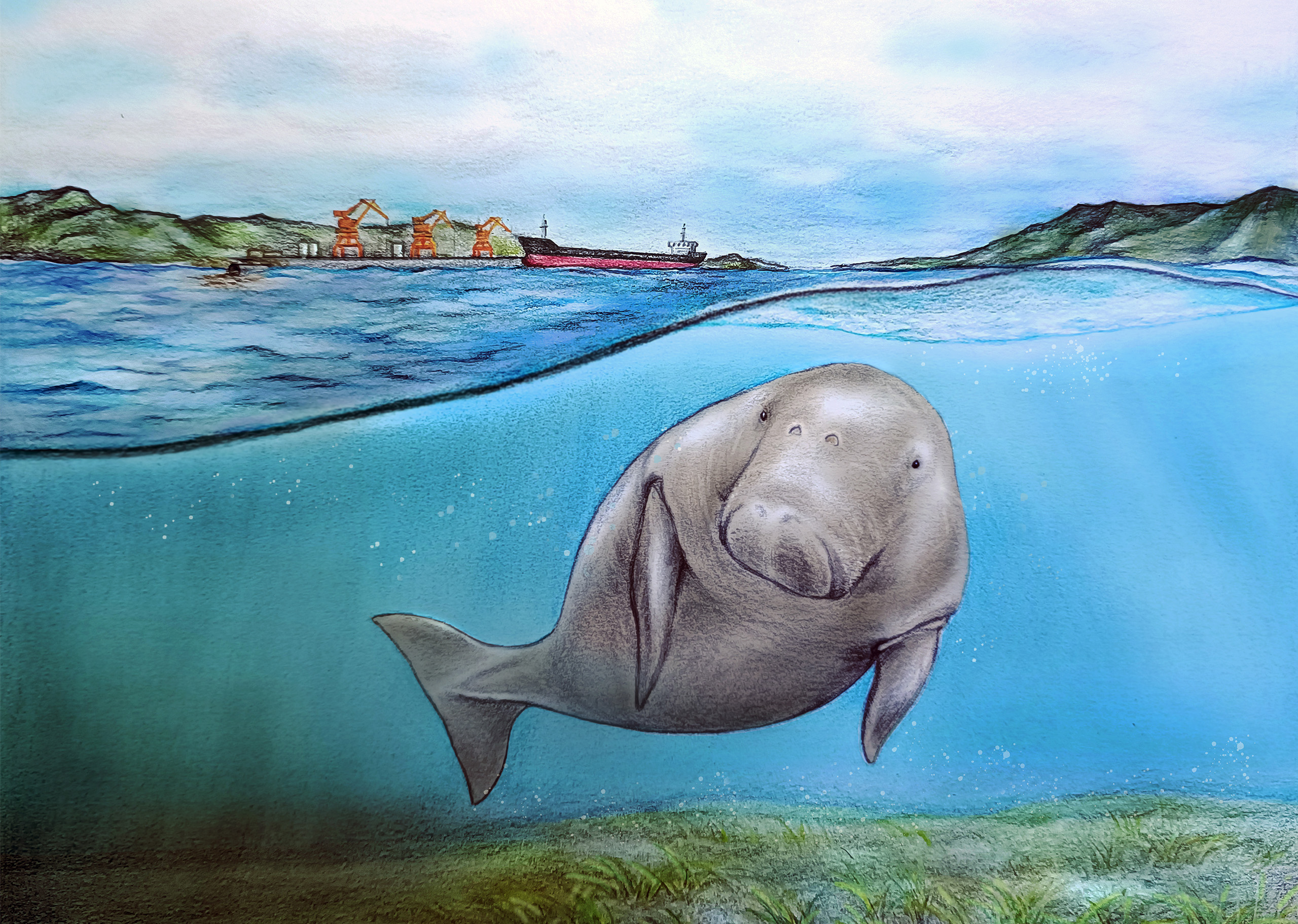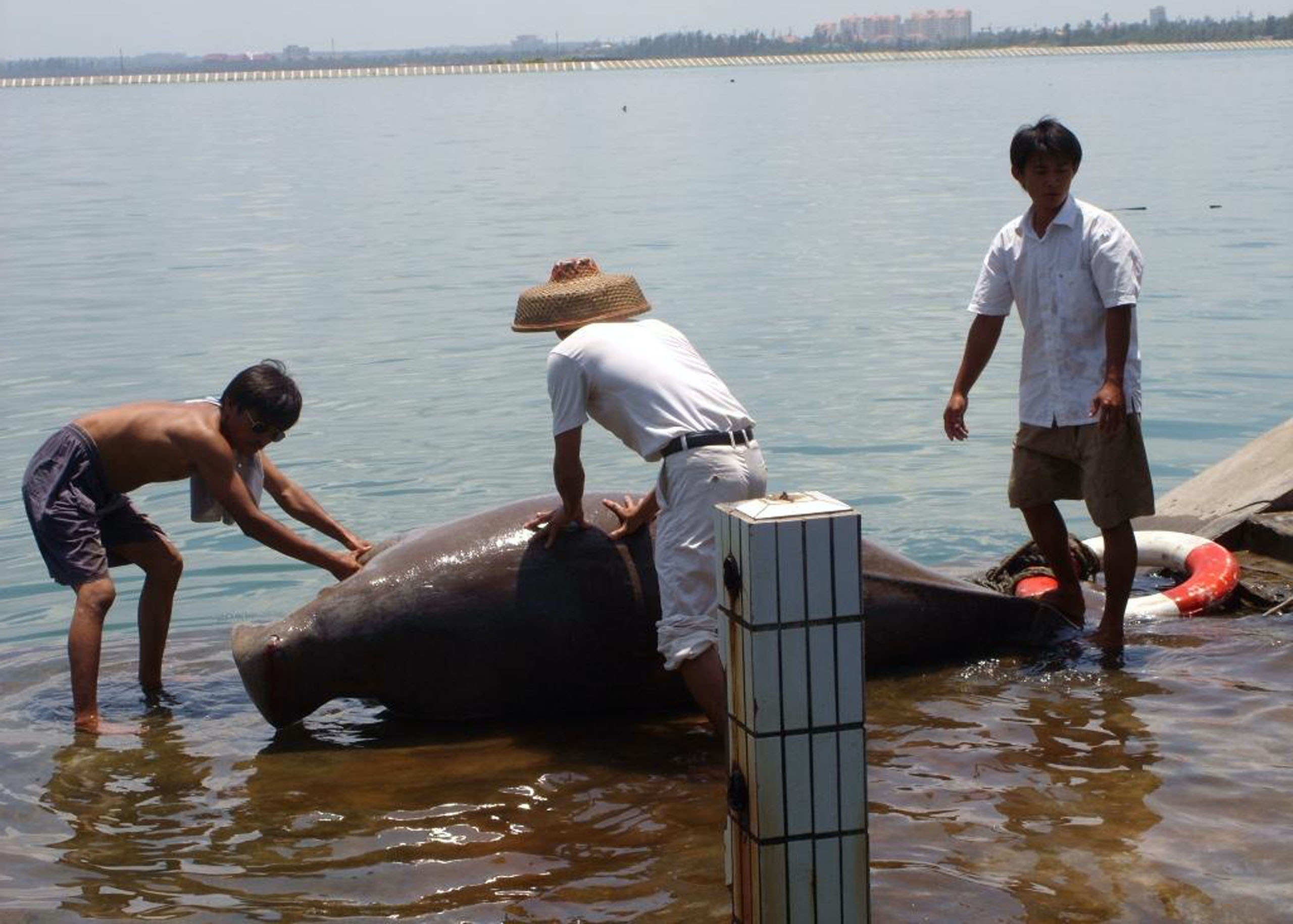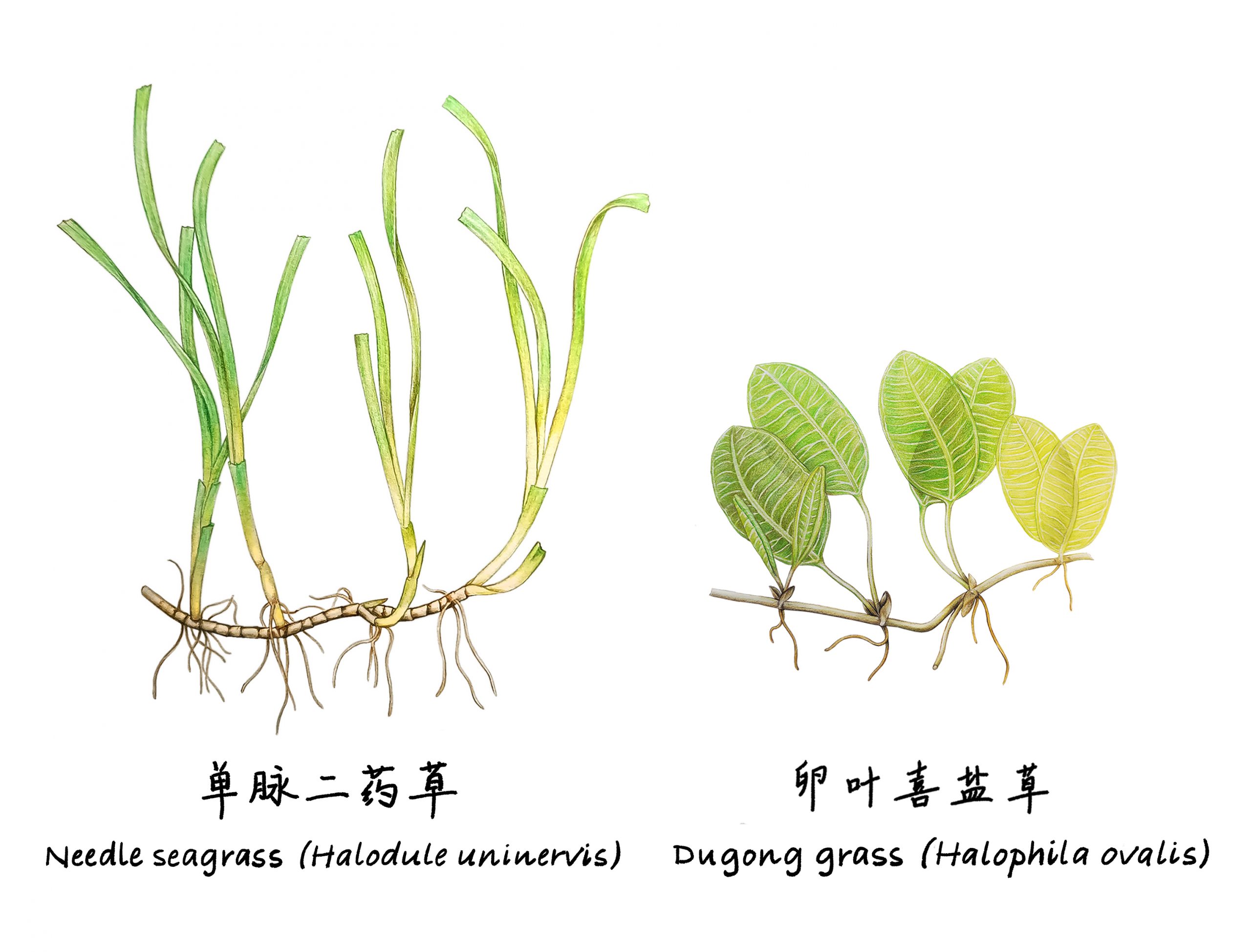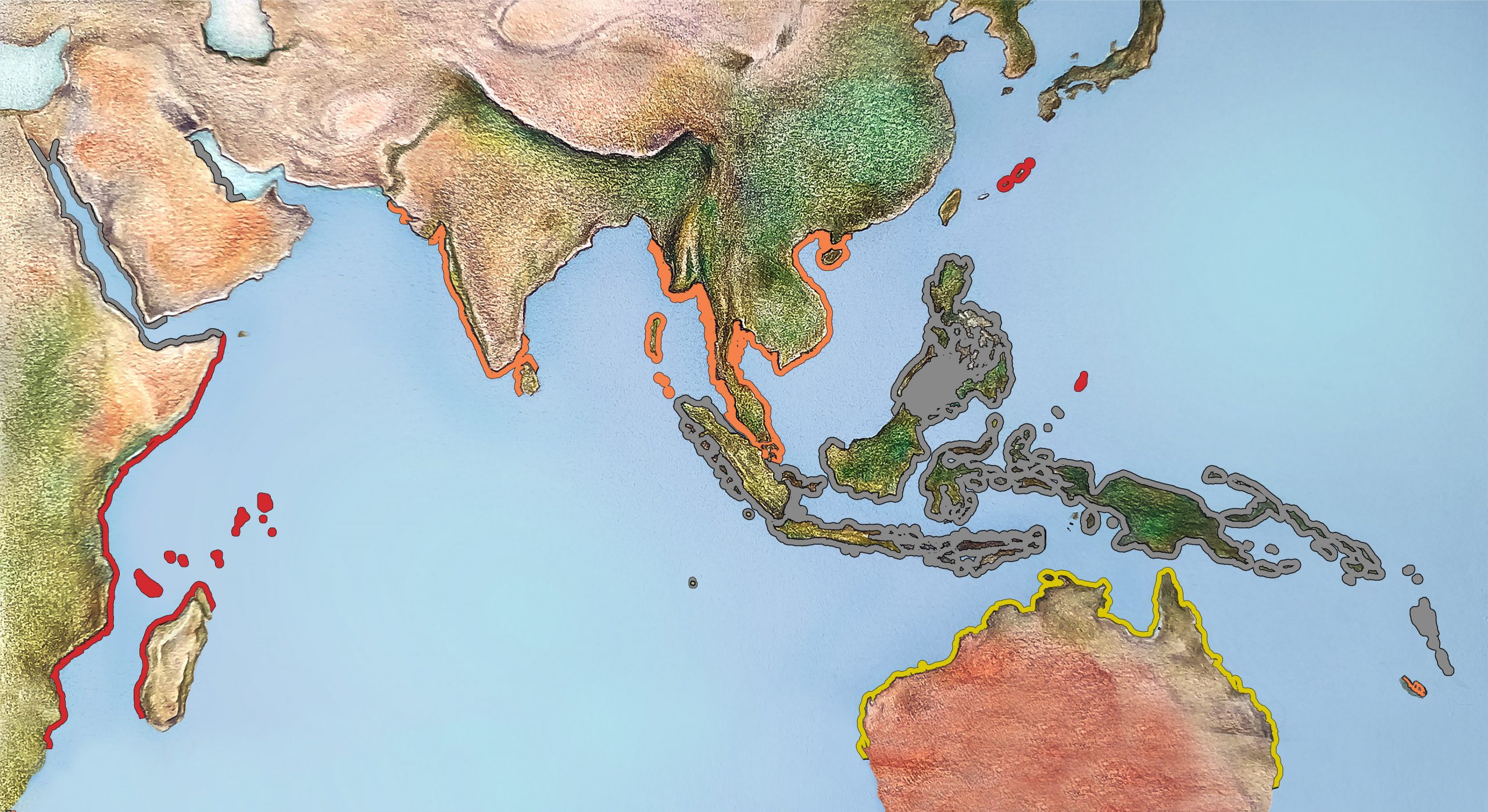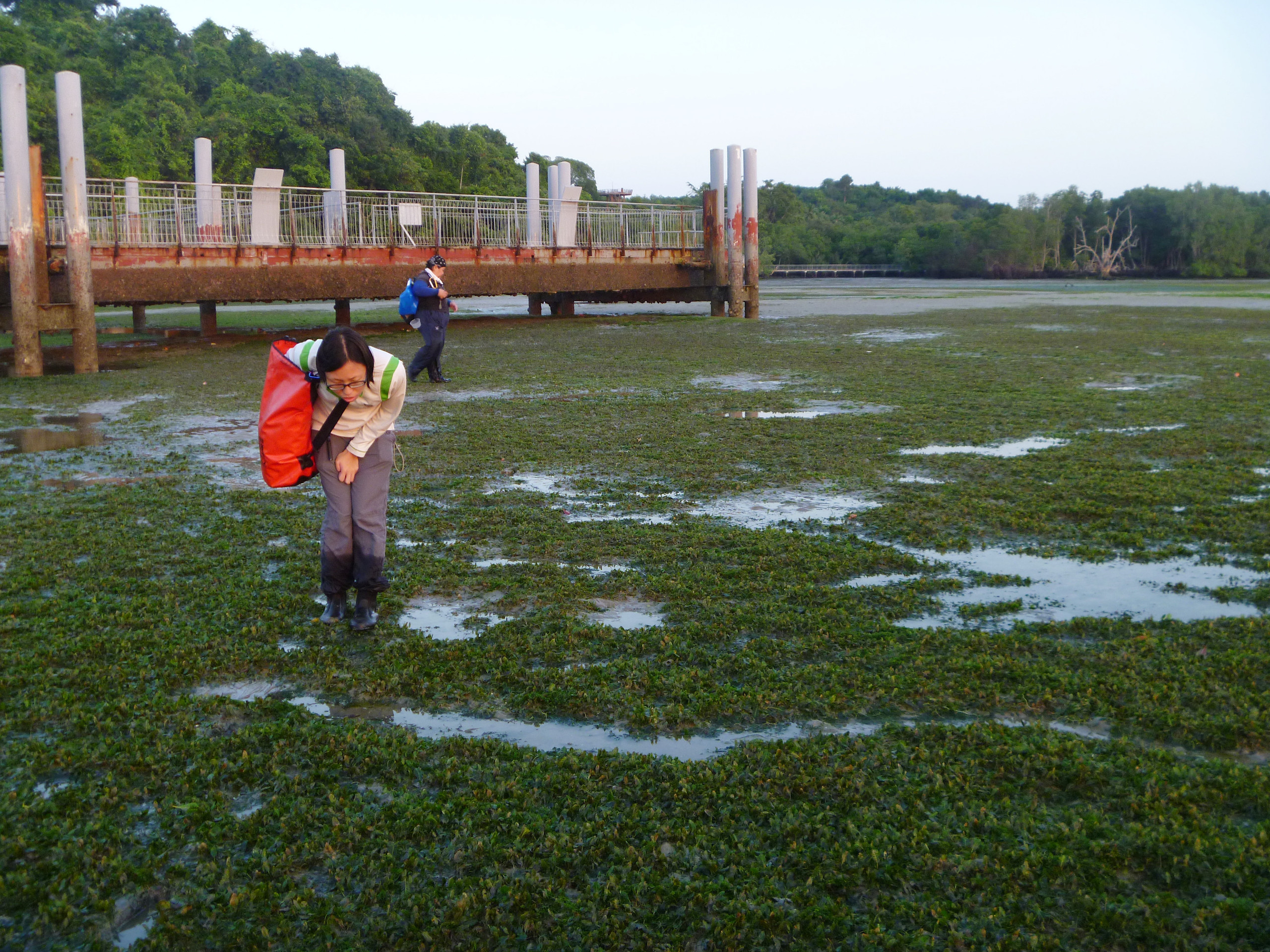Correction: This article originally described the dugong population in Okinawa as extinct. It is in fact critically endangered.
A recent study has found the dugong, a mammal thought to have inspired tales of mermaids, to be functionally extinct in Chinese waters. This means the remaining population is unsustainable and very likely to disappear in the near future.
The dugong is the only purely marine grazing mammal alive today. It mainly eats seagrasses and is found in the shallow temperate and tropical waters of 37 countries in the Indian and western Pacific oceans.
About 100,000 dugongs remain worldwide, Helene Marsh, a professor at James Cook University in Australia, told the New York Times. But in many countries their outlook is bleak or unclear.
The International Union for Conservation of Nature’s Red List classifies the species as “vulnerable”. They are already extinct in Mauritius and Taiwan and the Japanese population appears to be worryingly small. The same fate may befall other populations.
“I think the dugong will go extinct in many places in its range,” Marsh told China Dialogue Ocean. But Chinese conversationists aren’t waiting for the axe to fall. At China’s only dugong reserve, in Guangxi, experts are working to restore seagrass meadows in the hope of a dugong return.
But will it happen? Marsh speaks plainly: “Probably not.”
The conservationists know they have their work cut out to stand a chance of bringing the dugong back. If successful, it could take decades at a conservative estimate.
Conservation, at last
China’s dugongs used to be found mostly in the Beibu Gulf, at the north end of the South China Sea. Ancient people regarded the animal as sacred and did not hunt it.
There are no concrete figures, but the population here was never very big compared to places like Saudi Arabia and Australia, which have tens of thousands. It faded away after hunting in the 1950s and 1960s to boost off-season fishery catches, and then a mass catch in the 1970s for “research and conservation”. Almost 250 dugongs were killed during these rounds of hunting and catching.
Animals such as the dugong can go extinct very quickly because they mature slowly, explains the extinction study cited earlier, which was produced by the Chinese Academy of Sciences’ Institute of Deep-sea Science and Engineering, and other institutions. During the 18th century, a close relative, the Steller’s sea cow, was hunted to extinction a mere 27 years after its discovery by Europeans. The rapid collapse in the Chinese dugong population is likely due to a combination of deliberate hunting, degradation of seagrass meadows and accidental entanglement, the study states.
Dugongs can live to be 70 years old. But with 25 or 26 years between generations, a single infant per pregnancy, and a nursing period of up to three years, they cannot quickly replace their numbers. Of the 800 people the researchers interviewed, only a minority reported seeing a dugong, an average of 23 years ago. Just three sightings in the last five years were reported, leading the researchers to their conclusion of extinction.
The dugong reserve in Hepu, Guangxi, was founded in 1986 and given national reserve status in 1992. Dugongs, meanwhile were given Class I protected species status in 1988, with a ban on hunting. But that did not lead to numbers increasing. In a 2021 report, the head of the reserve, Zhang Hongke, said he had not seen a single dugong in his 14-year tenure.
In a letter published in Science magazine, the extinction researchers wrote: “Sightings in China were already rare by the 1980s indicating that these actions were implemented too late to be effective.”
The degradation of the seagrass is a major problem. Zhao Peng of Hainan University, who has worked on restoring the meadows at the reserve, told the media: “There isn’t enough seagrass here now to feed even one dugong.”
There were 585 hectares of meadows in and around the reserve at the turn of the century. By February 2022, after severe degradation and partial restoration, only 81.7 hectares remained. Zhao explained, though, that the numbers could change: “The meadows themselves are unstable, so the figures fluctuate.”
Seagrass needs light to grow, and so requires clean, clear water. Fishing, aquaculture, beach foraging, land reclamation, wastewater outflows – all these activities have damaged the meadows or caused pollution and turbidity. The reserve has also been badly affected by invasive salt-water cordgrass. Hepu is China’s seagrass meadows in microcosm.
Recent research from Chinese scientists shows that almost 80% of the country’s seagrass meadows have been lost for one reason or another, with 6 of 22 seagrass species disappearing and only 26,000 hectares of meadows remaining. That is about three-quarters of the area of the Hepu reserve.
According to Zhang Hongke, the long-term aim for Hepu is to see 500 hectares of seagrass meadows restored over a decade or so, which will be enough to support a population of reintroduced dugongs. His colleague Zhou Yu, however, thinks it will take decades.
Will the dugong return?
Restoration must come first. Zhao Peng explains that “Restore the seagrass, return the dugong” was the slogan used back in 2019, when the reserve started working with Hainan University’s State Key Laboratory of South China Sea Marine Resource Utilisation.
Getting the dugong back, whether by reintroduction or waiting for a more natural return, is a problem for another day. However, with populations also falling in nearby countries, the chances of dugongs returning of their own accord seem low.
If you wreck the habitat and kill the animals, they disappear and the chance of getting them back is lowHelene Marsh, professor at James Cook University in Australia
Dugongs tend to stick to their own patches, though they can migrate hundreds of kilometres, and perhaps up to a thousand. The extinction study suggests, therefore, that dugongs spotted over the last five years in waters off Zhanjiang, Guangdong province, may have come from the Philippines, 600 kilometres from the Chinese coast. This does not mean they will stay and breed.
“I think it’s very unlikely that the dugong would come back naturally, because it’s quite a way to the nearest significant dugong populations. And the populations are very depleted in Vietnam and in the Philippines,” said Marsh.
Professor Samuel Turvey, one of the authors of the extinction study, agrees that dugong populations in both Vietnam and the Philippines are small, unhealthy and not growing. The dugongs in the Philippines were classed as critically endangered in 2004. According to a National Geographic article from 2018, in Vietnam they are only found in the southernmost islands of Phu Quoc and the Con Dao archipelago – 1,800 kilometres from the Hepu reserve.
Meanwhile, more research is needed to confirm whether or not the dugong can be found off the various islands of the South China Sea.
Marsh explained that dugongs learn about their environment and how to survive from their mothers – another obstacle to their relocating to different habitats. A 1979 paper divided the world’s dugongs into five distinct populations, with very little genetic exchange between them. This led Wang Pilie and others to conclude that the dugong of China, Malaysia and Sumatra form one community, while those in Japan, the Philippines and the eastern coast of Taiwan form another, with little likelihood of travel between the two. If young dugong can’t learn about Chinese waters from their mothers, Marsh thinks any reintroduced animals may struggle to adapt.
Turvey was more optimistic: “Just because they had not grown up there, if the environmental conditions were suitable – plentiful seagrass etc – then they might be expected to be able to survive and reproduce. Animal populations are often able to colonise environmentally suitable new regions, even if they have no previous local experience.”
A reintroduction remains a distant and ill-defined idea. Both dugongs and dugong experts are rare in China. It is hard to imagine reintroducing the animal in the coming decade, or even decades. However, a Chinese environmental organisation, the China Biodiversity Conservation and Green Development Foundation, has started to work towards that goal. The foundation was originally launched to reintroduce the Père David’s deer to China and once sparked controversy by declaring the Chinese pangolin functionally extinct.
No country has ever tried to reintroduce the dugong from abroad, and Marsh warns of many obstacles. The biggest, alongside issues with adaptation to the new environment and the risk of animals dying while being trapped, is simply where to get the animals from. Only Australia and Saudi Arabia have populations of any reasonable size, as others have suffered from habitat loss and overhunting. “I think for Australian dugongs to be introduced to China would require a very high-level government agreement. I have no idea how the Australian government would respond,” she said. She worried that many would see the move as a bad idea.
Others in need of conservation
While her hopes for the return of the dugong are not high, Marsh is approving of China’s efforts to restore seagrass meadows, which she says will bring lots of benefits for other species in the reserve even if the dugong does not return. The Beibu Gulf is one of the most biodiverse parts of China. The dugong reserve is also home to the Indo-Pacific humpbacked dolphin, the Indo-Pacific finless porpoise, the horseshoe crab, and many other rare species. Like many other wild animals, these species are threatened by both human activity and climate change.
According to a recent global report from the WWF, there was a 69% decline in relative abundance of monitored species between 1970 and 2018. Habitat degradation and environmental pollution leave thousands of species at risk of extinction in the coming decades.
Marsh doesn’t think the dugong will disappear entirely, but that it will be hard to avoid extinction in some regions. “People have to understand that if you wreck the habitat and kill the animals, they disappear and the chance of getting them back is low,” she said. She is calling for more countries to work together to protect the species.
In 2007, the Convention on Migratory Species (CMS) founded a dugong working group and signed a memorandum of understanding. According to the MoU, “dugongs migrate and disperse over vast distances, which makes their survival dependent on their conservation and management over a wide area and in a wide range of marine and coastal habitats.” The MoU has 29 signatories from within the dugong’s range. Some have started coordinating their research and improving policy and implementation via an online platform, with support from the MoU and other conservation plans.
China hasn’t signed up to the CMS yet. In 2017, the National Forestry and Grassland Administration, which is responsible for protecting wild animals, said that it had not yet finished an assessment of whether or not to join. But it did say it would “continue to strengthen cooperation with the Convention and other countries, using a range of approaches to improve protection of migratory species.”
The challenges for conserving the dugong differ across countries, but overhunting is a common issue in regions where the animal is extremely rare. Seagrass meadow degradation due to habitat disturbance and coastal development, and consequent food shortages, are also a common threat. Looking at the extinction of the dugong in China and Japan, the researchers of the latest paper say: “Ongoing dugong extirpations emphasise the crucial need to act early, before efforts to recover populations or locate surviving individuals become too challenging.”
